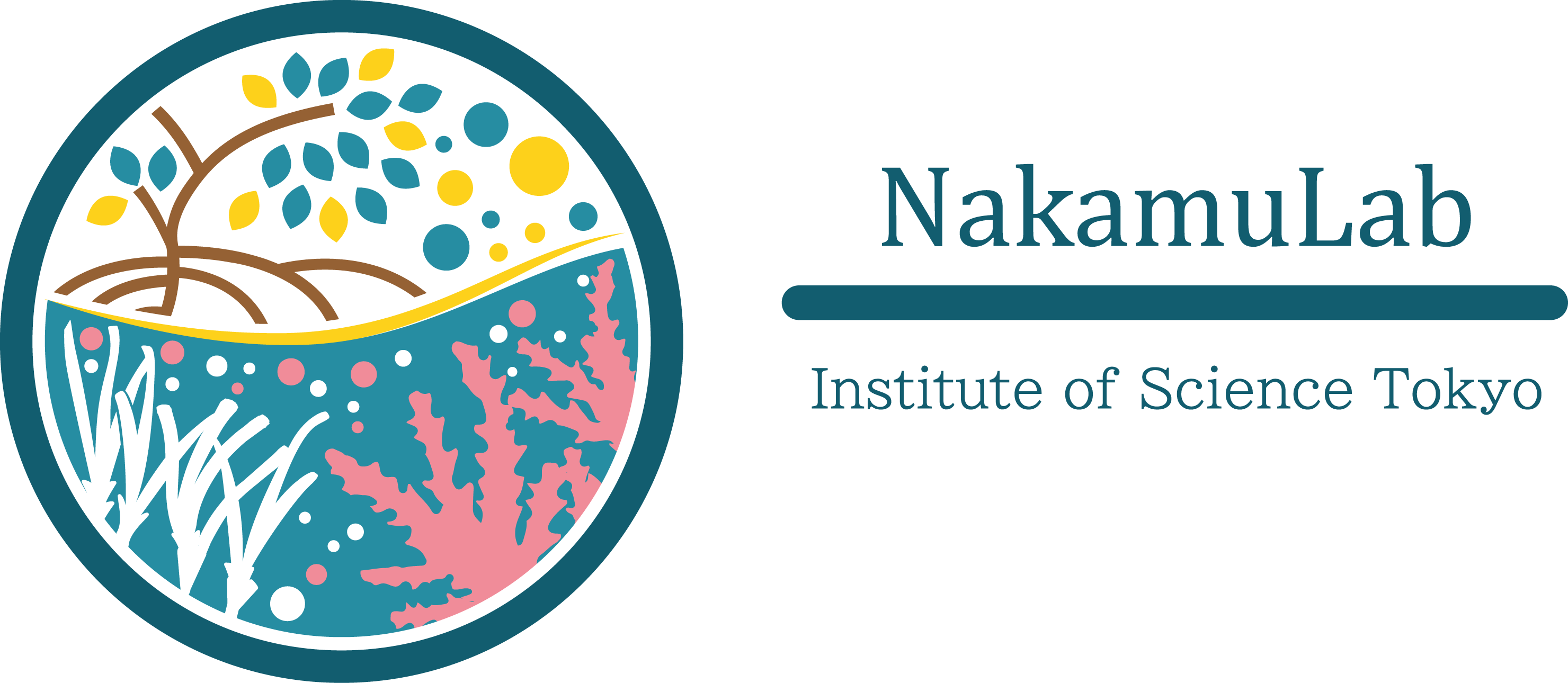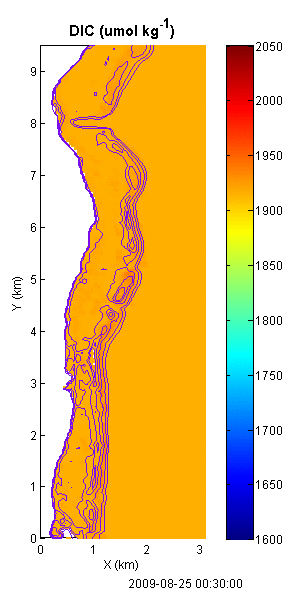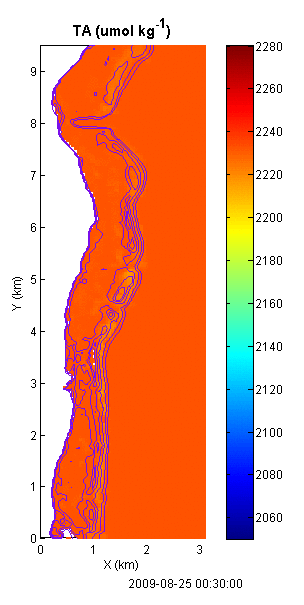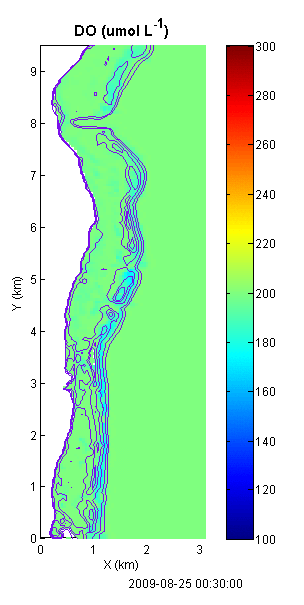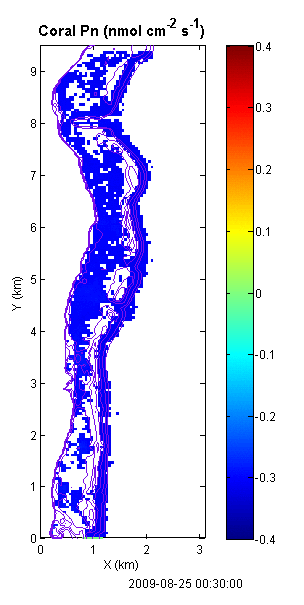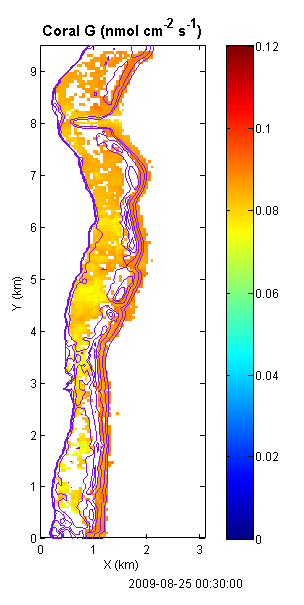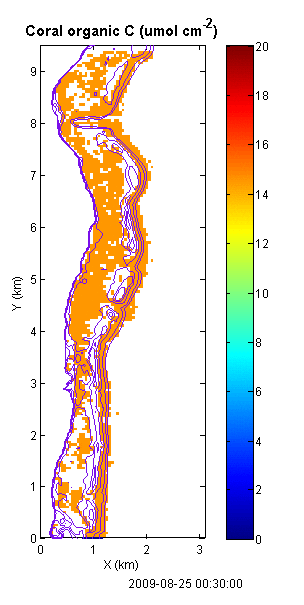Integrated Model Development for the Coastal Ecosystem
In extremely shallow waters, such as found in coral reef areas, water flow characteristics, thermal environments, water quality, among other factors, can experience dynamic changes. In order to investigate how the coral reef ecosystem responds to the environment under such dynamic fluctuations, we have been developing an integrated model of the coral reef ecosystem in which the above-mentioned coral polyp model is combined with a 3-D hydrodynamic circulation and water quality simulation model.
Reef-scale integrated coral reef ecosystem model overview (Nakamura, 2020)
Dissolved inorganic carbon (DIC), total alkalinity (TA), and dissolved oxygen concentration (DO) simulated using a 3-D circulation model (top row), and net photosynthetic rate (Pn), calcification rate (G), and coral organic carbon storage calculated by coral polyp model (bottom row) for the Shiraho coral reef area
The figure above shows simulation results from the integrated model system we have been developing. The results confirm that coral metabolism exhibits spatiotemporal fluctuations in response to changes in water quality, which are driven by local water flow environments. From this we can say that the coral polyp model’s best feature is the ability to reproduce the coral community response to the environment.
We are continuing to advance this system, and plan to conduct various scenario analyses and similar nu
